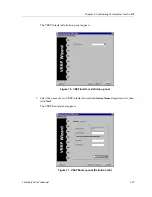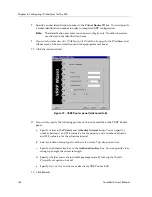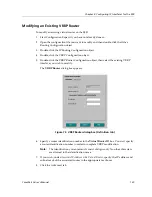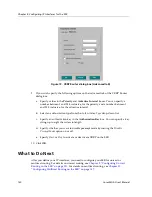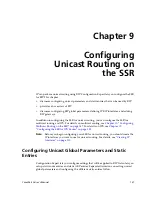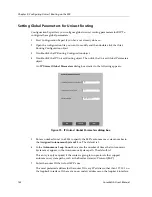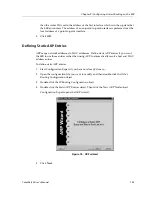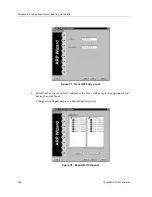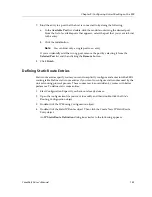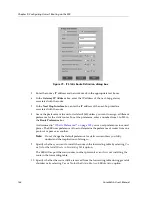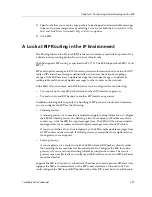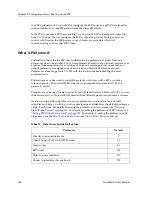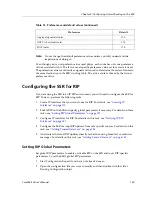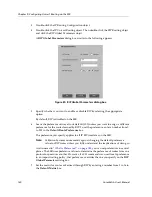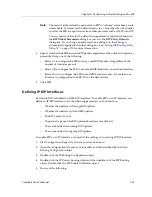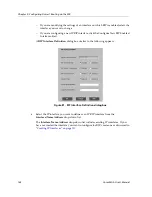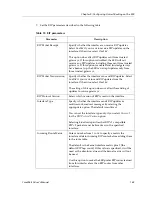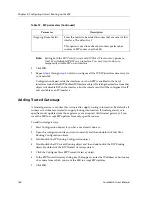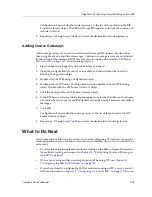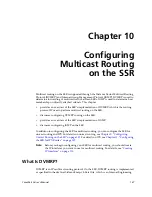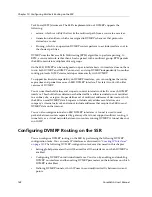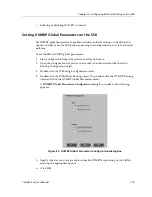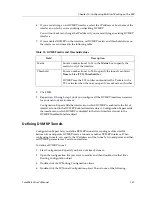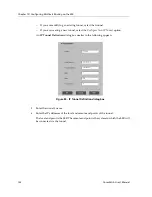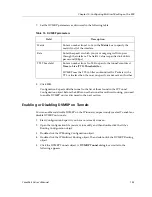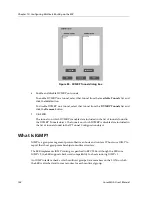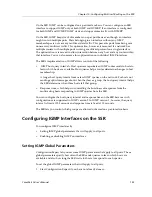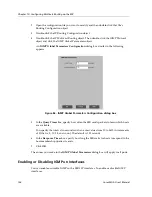
CoreWatch User’s Manual
141
Chapter 9: Configuring Unicast Routing on the SSR
Note:
The metric 16 (the default) is equivalent in RIP to “infinite” and makes a route
unreachable. You must set the default metric to a value other than 16 in order
to allow the SSR to export routes from other protocols such as OSPF into RIP.
You can specify values for the default route preference and default metric in
the
RIP Global Parameters
dialog box just as in the
RIP Policy Defaults
dialog box. If you change a parameter in one dialog box, that change is
automatically applied to the other dialog box. See
“Setting RIP Routing Policy
Defaults” on page 298
for more information.
8.
Specify whether the SSR broadcasts RIP packets regardless of the number of interfaces
present by doing one of the following:
–
Select
On
to configure the SSR to always send RIP broadcasts regardless of the
number of interfaces present.
–
Select
Off
to configure the SSR to never send RIP broadcasts on attached interfaces.
–
Select
Choose
to configure the SSR to send RIP broadcasts only if more than one
interface is configured on the SSR. This is the default state.
9.
Click
OK
.
Defining IP RIP Interfaces
By default, RIP is disabled on all SSR IP interfaces. To enable RIP on an IP interface, you
define an IP RIP interface to set the following parameters on that interface:
–
Whether the interface will accept RIP updates
–
Whether the interface will send RIP updates
–
The RIP version (1 or 2)
–
The packet type used for RIP updates (broadcast or multicast)
–
The metric added to incoming RIP updates
–
The metric added to outgoing RIP updates
To enable RIP on an IP interface or to modify the settings of an existing IP RIP interface:
1.
Start Configuration Expert if you have not already done so.
2.
Open the configuration file you want to modify and then double-click that file’s
Routing Configuration object.
3.
Double-click the IP Routing Configuration object.
4.
Double-click the IP Unicast Routing object and then double-click the RIP Routing
object. Double-click the RIP Enabled Interfaces object.
5.
Do one of the following:
Содержание CoreWatch
Страница 1: ...CoreWatch User s Manual 9032564 04...
Страница 2: ...Notice 2 CoreWatch User s Manual...
Страница 20: ...Preface 20 CoreWatch User s Manual...
Страница 64: ...Chapter 5 Changing System Settings 64 CoreWatch User s Manual...
Страница 86: ...Chapter 6 Configuring SSR Bridging 86 CoreWatch User s Manual...
Страница 106: ...Chapter 7 Configuring VLANs on the SSR 106 CoreWatch User s Manual...
Страница 206: ...Chapter 12 Configuring QoS on the SSR 206 CoreWatch User s Manual...
Страница 246: ...Chapter 13 Configuring Security on the SSR 246 CoreWatch User s Manual...
Страница 274: ...Chapter 15 Configuring BGP on the SSR 274 CoreWatch User s Manual Figure 184 BGP Peer Group Definition panel Options tab...
Страница 363: ...CoreWatch User s Manual 363 Chapter 16 Configuring Routing Policies on the SSR 9 Click OK...
Страница 364: ...Chapter 16 Configuring Routing Policies on the SSR 364 CoreWatch User s Manual...
Страница 370: ...Chapter 17 Checking System Status 370 CoreWatch User s Manual...
Страница 390: ...Chapter 18 Monitoring Real Time Performance 390 CoreWatch User s Manual...
Страница 396: ...Chapter 19 Checking the Status of Bridge Tables 396 CoreWatch User s Manual...
Страница 430: ...Chapter 20 Checking the Status of Routing Tables 430 CoreWatch User s Manual...
Страница 442: ...Chapter 22 Obtaining Reports 442 CoreWatch User s Manual...
Страница 456: ...Appendix B CoreWatch Menus 456 CoreWatch User s Manual...

